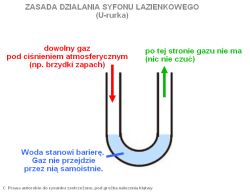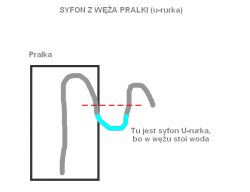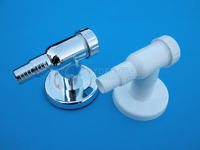lukiiiii wrote: Can I use this siphon by additionally pulling the ball out of it?
First, you have to understand what a siphon actually is. Well, a siphon is any arbitrary U-shaped tube (the so-called U-tube), on the bottom of which a little water rests, so that this water seals (completely clogs) the tube, constituting a barrier for gases trying to pass through the tube by itself . It is possible for gas to overcome such a water barrier only when the gas begins to be pumped under pressure. And the gases from the septic tank are not under pressure, so standing water in such a U-tube will effectively stop them. I scratched my knee with a drawing of how the siphon works in the fittings.
Second, if you remove a ball from a ball trap, it is no longer a trap. In this case, it is this ball that provides the gas blockage. If you are removing the ball, you might as well remove the siphon from the installation, because without the ball it is just a nothing-doing piece of plastic.
Returning to the drain hose of the washing machine - if we arrange it (in accordance with the washing machine manual), in these plastic latches mounted on the back wall of the washing machine, we get the so-called The U-tube, in which the water will stand, is the siphon. So you don't need an additional siphon. You just need to stiffen the obtained u-tube siphon with an additional plastic arch and it's ready.
Another example - stagnant water in a toilet bowl is also an "u-tube" siphon.
And if any of you rush fruit wine at home, this glass tube that is put on the bottle is also a siphon working on the principle of an u-tube - it prevents the fermenting wine from getting oxygen into the cylinder cavity, and allows it to escape from the bottle. cylinder of excess gases (by-products of fermentation), when the pressure in the cylinder is higher than the atmospheric pressure.
I hope I helped.








